Weeds are a nuisance that tarnish the visual appeal and steal vital nutrients from your lawn in Iowa. It's important to understand the difference between the two types of weeds: broadleaf and grassy. Grassy weeds resemble grass with narrow leaves and often go unnoticed due to their similar appearance. In contrast, broadleaf weeds have wide leaves with branching veins, making them stand out in lawns. Effective weed control involves a comprehensive approach targeting both types, ideally through a professional program. This includes pre-emergent treatments to prevent new growth and post-emergent treatments to eliminate existing weeds. Such programs ensure a robust defense against both grassy and broadleaf weeds, maintaining a healthy, attractive lawn.
What are grassy weeds?
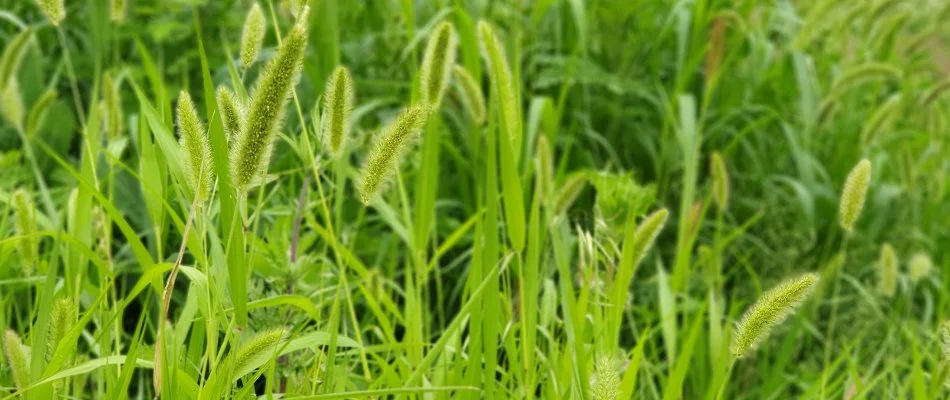
Grassy weeds derive their name from their resemblance to grass. These weeds typically have narrow leaves and rounded or flattened stems, making them blend in easily with your lawn's grass. As monocots, they grow a single leaf from a seed. This characteristic helps differentiate them from broadleaf weeds, which are dicots. Grassy weeds often exhibit faster growth rates, making them noticeable amidst slower-growing grass species.
Common examples of grassy weeds include foxtail and crabgrass. Foxtail is usually characterized by its bushy seed heads resembling a fox’s tail, while crabgrass is known for its crab-like growth pattern, sprawling across the ground. Grassy weeds are particularly challenging because they mimic the appearance of your lawn grass, often going unnoticed until they spread extensively.
What are broadleaf weeds?
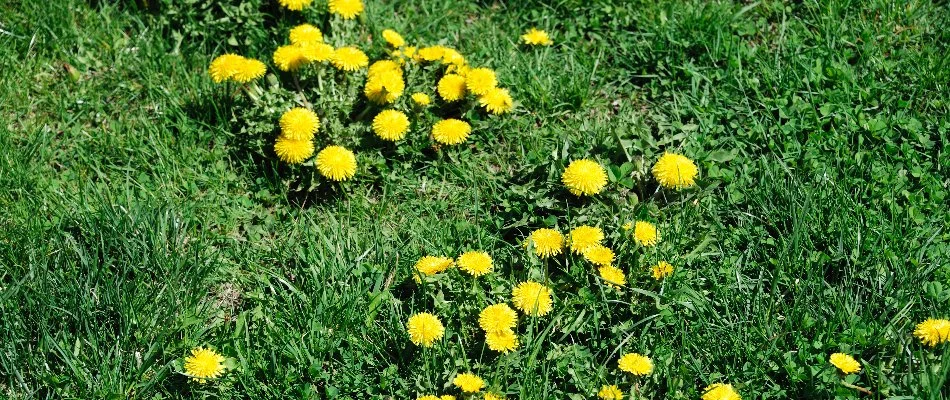
In contrast to grassy weeds, broadleaf weeds have wider leaves that grow in various directions, often featuring veins that branch out prominently across the leaf. Their unique foliage patterns make them stand out in a lawn since they don’t resemble grass. Additionally, broadleaf weeds are generally dicots, meaning they have two cotyledons, where seedlings emerge. Most broadleaf weeds also have a main taproot where smaller roots branch off, making them hard to control.
Examples of broadleaf weeds include dandelions, clover, and spurge. Dandelions are easily recognized by their bright yellow flowers and fluffy seed heads. Clover, with its trifoliate leaves, often forms dense patches, while spurge produces small, prostrate stems and can quickly establish in open spaces. Because of their distinct appearance, broadleaf weeds are generally easier to spot in a lawn compared to grassy weeds.
The Best Way to Control Grassy & Broadleaf Weeds on Your Lawn
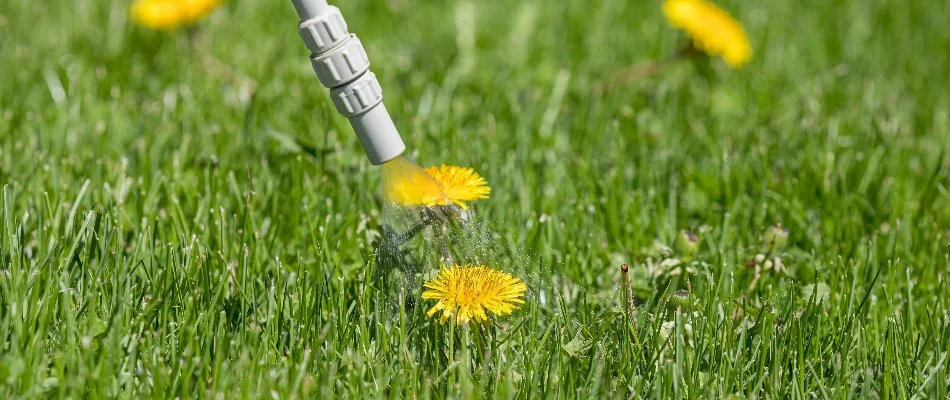
The key to effective weed control is to employ a comprehensive strategy that targets both grassy and broadleaf varieties. While manual pulling and spot treatments can be somewhat effective, for a more robust solution, consider enrolling in a professional weed control program. A professional weed control program involves applying both pre-emergent and post-emergent treatments top your lawn to eliminate weeds.
- Pre-emergent weed control treatments prevent newly germinated weeds from breaking through the soil surface. By doing so, the weeds will be unable to access other essential resources like sunlight, essentially stopping their further growth. These are typically applied in early spring to inhibit the growth of annual weeds like crabgrass.
- Post-emergent weed control treatments, on the other hand, help eliminate existing weeds. These are sprayed directly onto the foliage, disrupting weed growth by targeting the plant’s specific biology.
Call us today to sign up for our weed control program!
Weeds are one of, if not your lawn's most notorious enemy. Here at A+ Lawn & Landscape, we offer a professional weed control service that is designed to target both grassy and broadleaf weeds through a series of regularly scheduled pre- and post-emergent weed control treatments during the year. This program is offered to homeowners and business owners, along with HOAs, in Des Moines, West Des Moines, Ankeny, and nearby areas in Iowa. Call us today at (515) 289-2020 to sign up for our weed control program and get started on your journey to a weed-free lawn!

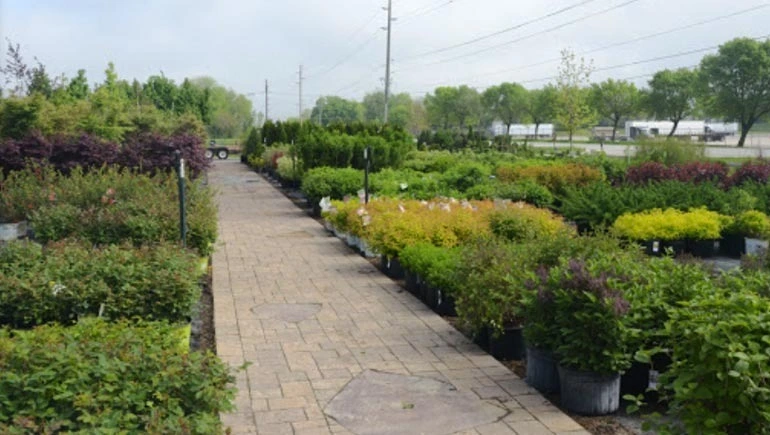
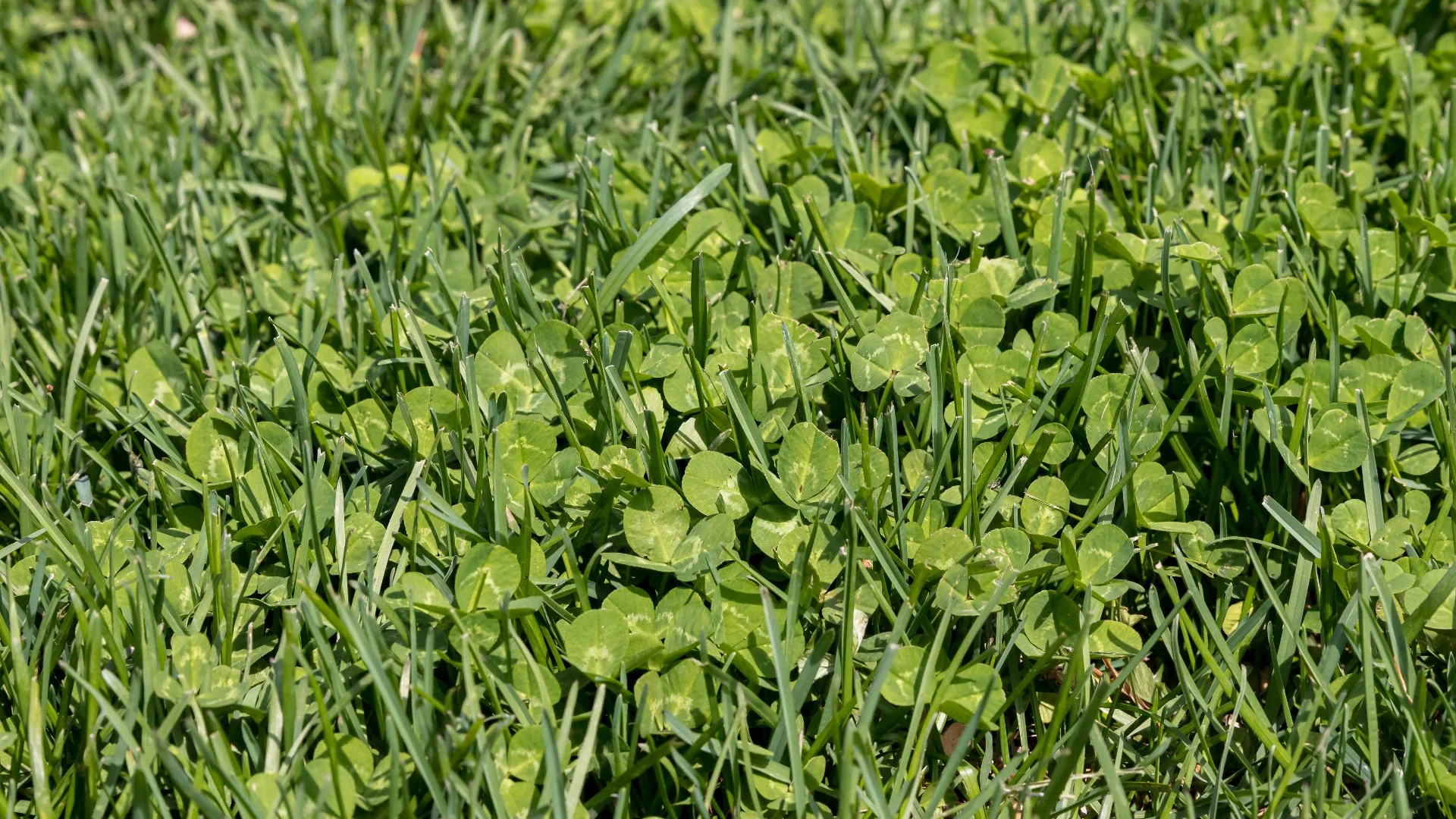


Comments (0)
Thanks for your comment!
Thanks for your feedback! Your comments have been successfully submitted! Please note, all comments require admin approval prior to display.
Error submitting comment!
There is a problem with your comment, please see below and try again.